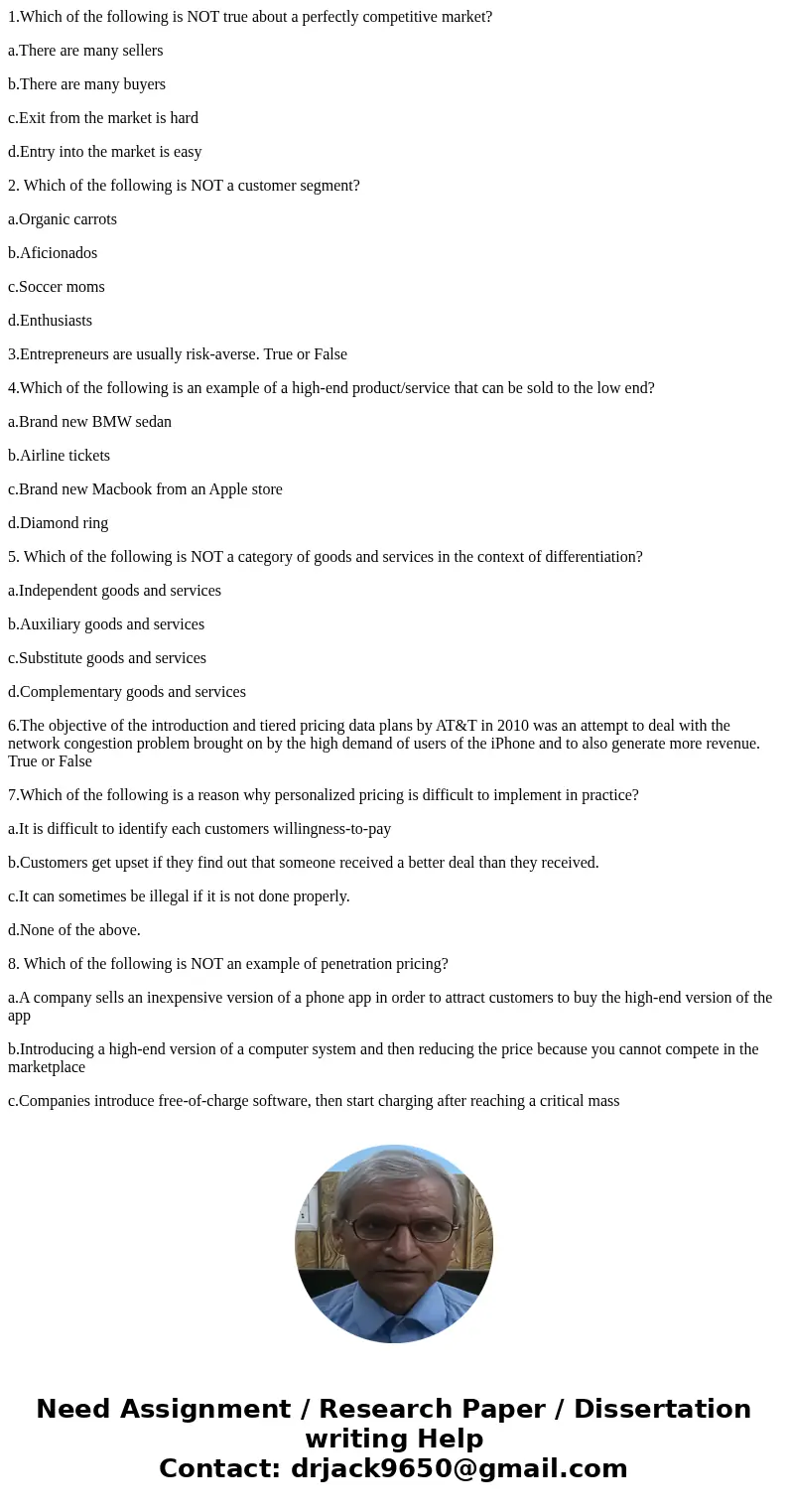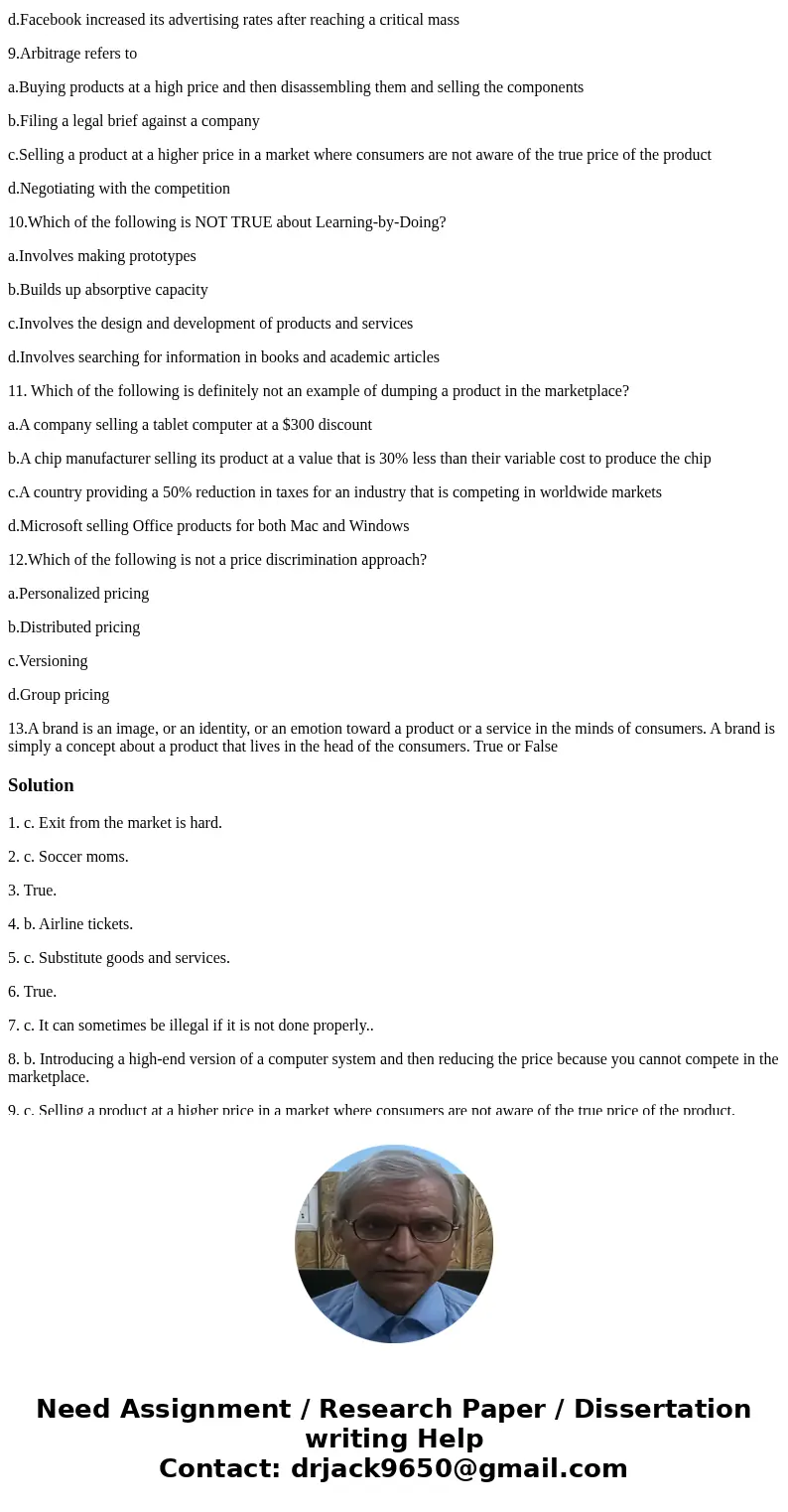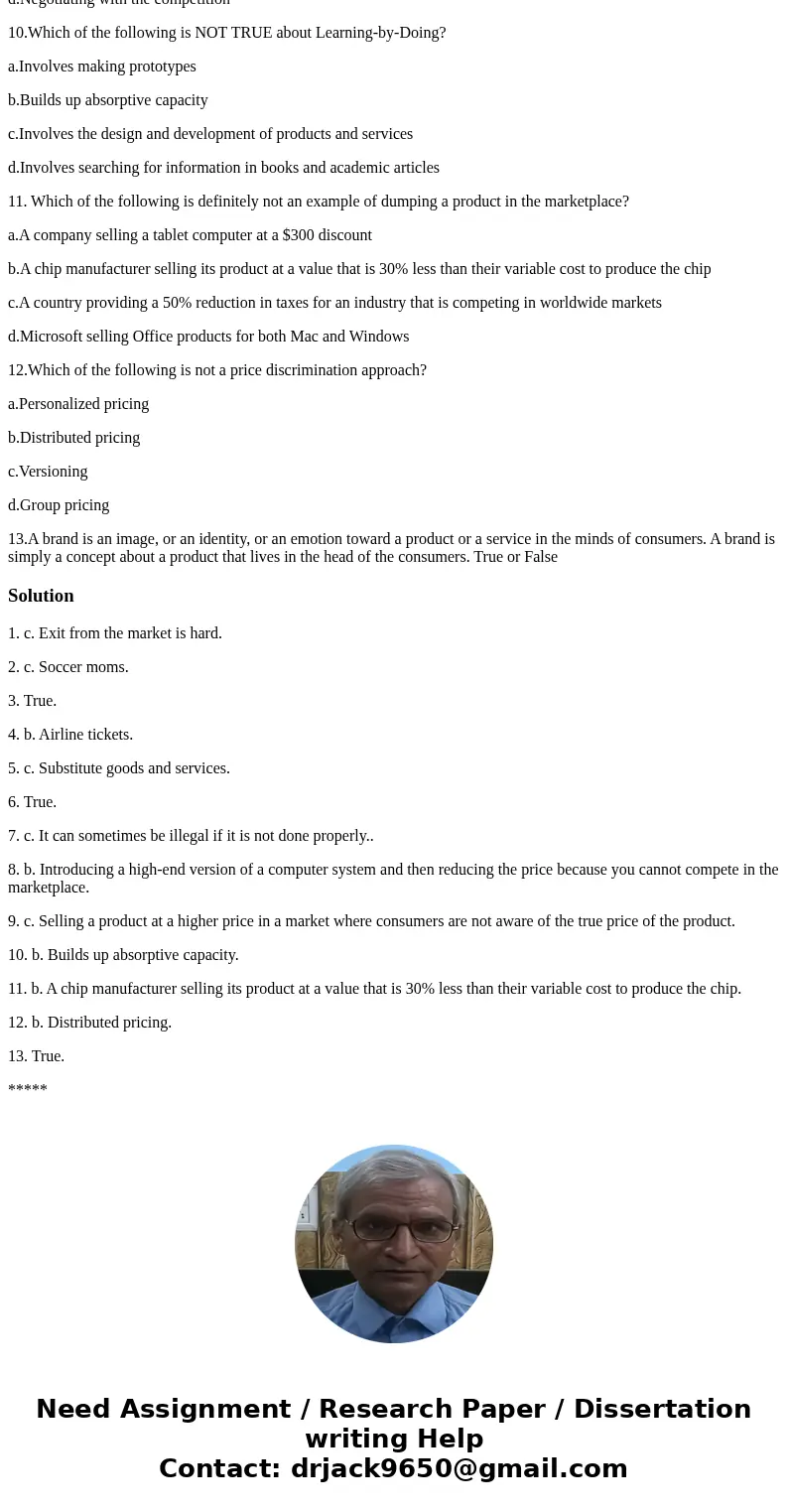1Which of the following is NOT true about a perfectly compet
1.Which of the following is NOT true about a perfectly competitive market?
a.There are many sellers
b.There are many buyers
c.Exit from the market is hard
d.Entry into the market is easy
2. Which of the following is NOT a customer segment?
a.Organic carrots
b.Aficionados
c.Soccer moms
d.Enthusiasts
3.Entrepreneurs are usually risk-averse. True or False
4.Which of the following is an example of a high-end product/service that can be sold to the low end?
a.Brand new BMW sedan
b.Airline tickets
c.Brand new Macbook from an Apple store
d.Diamond ring
5. Which of the following is NOT a category of goods and services in the context of differentiation?
a.Independent goods and services
b.Auxiliary goods and services
c.Substitute goods and services
d.Complementary goods and services
6.The objective of the introduction and tiered pricing data plans by AT&T in 2010 was an attempt to deal with the network congestion problem brought on by the high demand of users of the iPhone and to also generate more revenue. True or False
7.Which of the following is a reason why personalized pricing is difficult to implement in practice?
a.It is difficult to identify each customers willingness-to-pay
b.Customers get upset if they find out that someone received a better deal than they received.
c.It can sometimes be illegal if it is not done properly.
d.None of the above.
8. Which of the following is NOT an example of penetration pricing?
a.A company sells an inexpensive version of a phone app in order to attract customers to buy the high-end version of the app
b.Introducing a high-end version of a computer system and then reducing the price because you cannot compete in the marketplace
c.Companies introduce free-of-charge software, then start charging after reaching a critical mass
d.Facebook increased its advertising rates after reaching a critical mass
9.Arbitrage refers to
a.Buying products at a high price and then disassembling them and selling the components
b.Filing a legal brief against a company
c.Selling a product at a higher price in a market where consumers are not aware of the true price of the product
d.Negotiating with the competition
10.Which of the following is NOT TRUE about Learning-by-Doing?
a.Involves making prototypes
b.Builds up absorptive capacity
c.Involves the design and development of products and services
d.Involves searching for information in books and academic articles
11. Which of the following is definitely not an example of dumping a product in the marketplace?
a.A company selling a tablet computer at a $300 discount
b.A chip manufacturer selling its product at a value that is 30% less than their variable cost to produce the chip
c.A country providing a 50% reduction in taxes for an industry that is competing in worldwide markets
d.Microsoft selling Office products for both Mac and Windows
12.Which of the following is not a price discrimination approach?
a.Personalized pricing
b.Distributed pricing
c.Versioning
d.Group pricing
13.A brand is an image, or an identity, or an emotion toward a product or a service in the minds of consumers. A brand is simply a concept about a product that lives in the head of the consumers. True or False
Solution
1. c. Exit from the market is hard.
2. c. Soccer moms.
3. True.
4. b. Airline tickets.
5. c. Substitute goods and services.
6. True.
7. c. It can sometimes be illegal if it is not done properly..
8. b. Introducing a high-end version of a computer system and then reducing the price because you cannot compete in the marketplace.
9. c. Selling a product at a higher price in a market where consumers are not aware of the true price of the product.
10. b. Builds up absorptive capacity.
11. b. A chip manufacturer selling its product at a value that is 30% less than their variable cost to produce the chip.
12. b. Distributed pricing.
13. True.
*****



 Homework Sourse
Homework Sourse